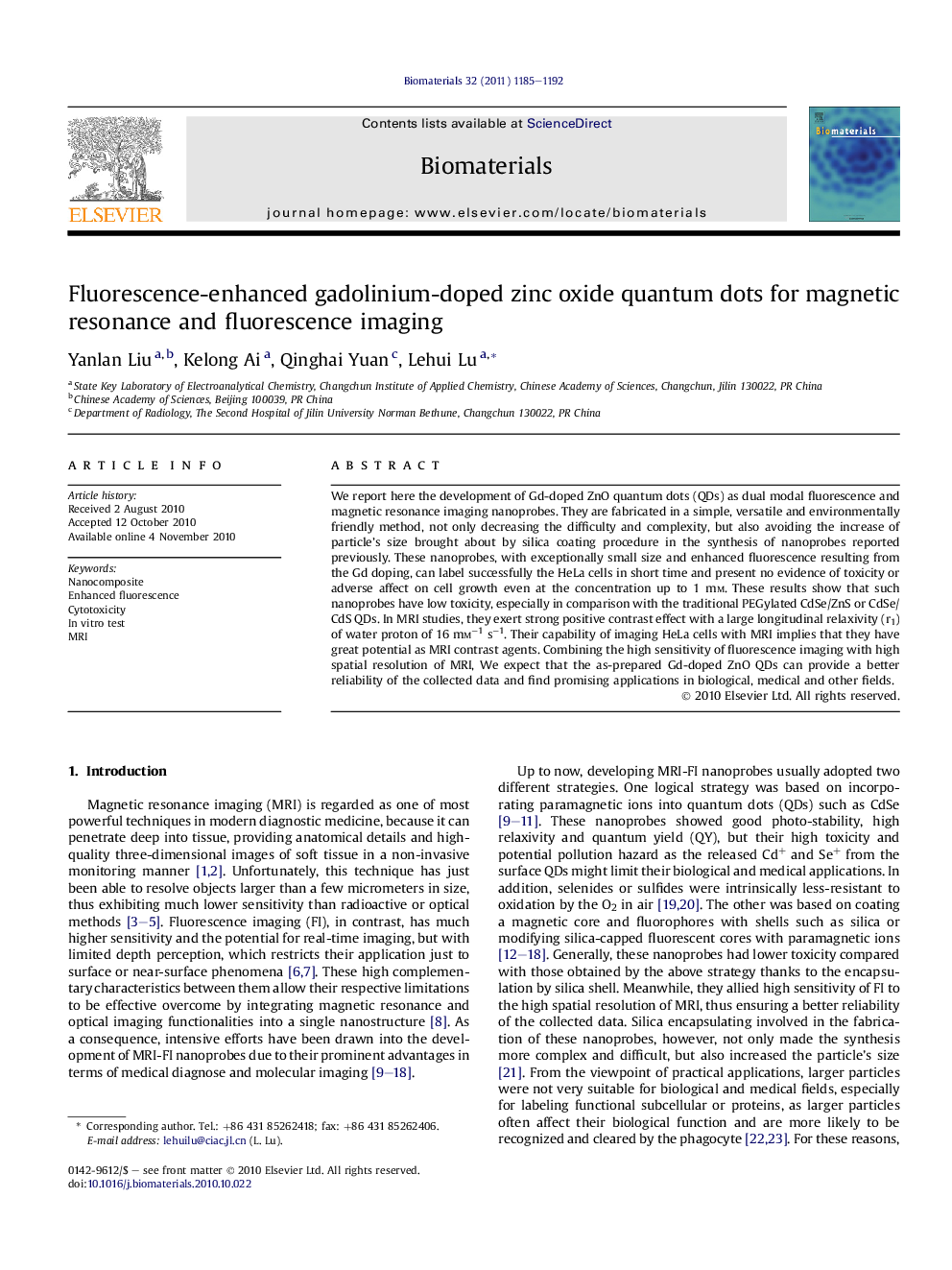| Article ID | Journal | Published Year | Pages | File Type |
|---|---|---|---|---|
| 8248 | Biomaterials | 2011 | 8 Pages |
We report here the development of Gd-doped ZnO quantum dots (QDs) as dual modal fluorescence and magnetic resonance imaging nanoprobes. They are fabricated in a simple, versatile and environmentally friendly method, not only decreasing the difficulty and complexity, but also avoiding the increase of particle’s size brought about by silica coating procedure in the synthesis of nanoprobes reported previously. These nanoprobes, with exceptionally small size and enhanced fluorescence resulting from the Gd doping, can label successfully the HeLa cells in short time and present no evidence of toxicity or adverse affect on cell growth even at the concentration up to 1 mm. These results show that such nanoprobes have low toxicity, especially in comparison with the traditional PEGylated CdSe/ZnS or CdSe/CdS QDs. In MRI studies, they exert strong positive contrast effect with a large longitudinal relaxivity (r1) of water proton of 16 mm−1 s−1. Their capability of imaging HeLa cells with MRI implies that they have great potential as MRI contrast agents. Combining the high sensitivity of fluorescence imaging with high spatial resolution of MRI, We expect that the as-prepared Gd-doped Zno QDs can provide a better reliability of the collected data and find promising applications in biological, medical and other fields.
